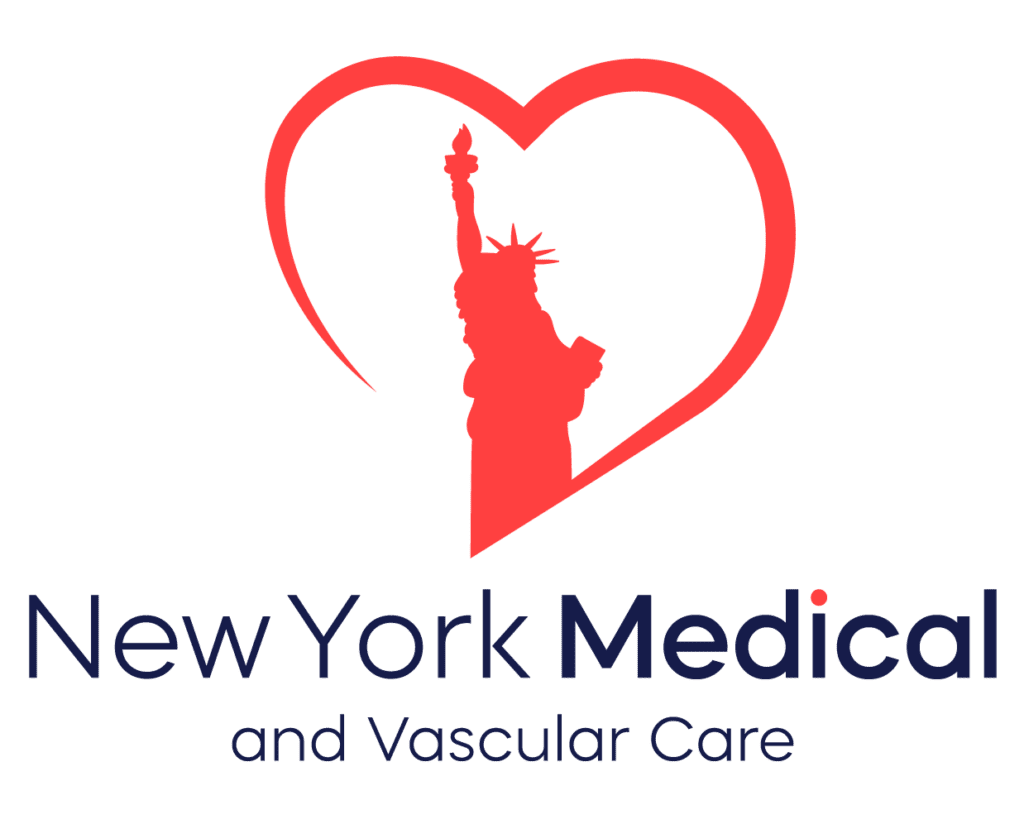Venous insufficiency is a condition where the veins in your legs do not allow blood to flow back to your heart efficiently, leading to blood pooling in the veins. This can cause swelling, pain, and other complications. At New York Medical and Vascular Care (NYMVC), we are dedicated to providing comprehensive care for venous insufficiency. Here’s an in-depth look at what venous insufficiency is, its symptoms, causes, and the available treatments.
What is Venous Insufficiency?
Venous insufficiency occurs when the valves in the veins of your legs, which normally keep blood flowing towards your heart, do not work properly. This leads to blood leaking backward and pooling in the veins. Over time, this can cause a range of symptoms and complications.
Symptoms of Venous Insufficiency
- Swelling in the legs or ankles
- Pain or a feeling of heaviness in the legs
- Varicose veins (enlarged, twisted veins visible under the skin)
- Skin changes (such as thickening, discoloration, or ulcers)
- Itching or a burning sensation in the affected areas
- Muscle cramps or spasms in the legs
Causes of Venous Insufficiency
Several factors can contribute to the development of venous insufficiency, including:
- Age: The risk increases with age.
- Gender: Women are more likely to develop the condition, particularly after multiple pregnancies.
- Family History: A family history of venous insufficiency or varicose veins increases the risk.
- Obesity: Excess weight puts additional pressure on the veins.
- Prolonged Sitting or Standing: Occupations that require long periods of sitting or standing can contribute to venous insufficiency.
- History of Deep Vein Thrombosis (DVT): Previous blood clots can damage the valves in the veins.
- Lack of Exercise: Physical inactivity can weaken the muscles that help pump blood from the legs to the heart.
Treatments for Venous Insufficiency
- Lifestyle Changes
- Exercise: Regular physical activity helps improve blood flow in the legs.
- Weight Management: Maintaining a healthy weight reduces pressure on the veins.
- Elevating the Legs: Elevating the legs above the heart level several times a day can help reduce swelling.
- Avoiding Long Periods of Sitting or Standing: Taking breaks to walk around or stretch can improve circulation.
- Compression Stockings
- Compression stockings are specially designed to apply pressure to the legs, promoting blood flow back to the heart and reducing swelling.
- Medications
- Medications such as diuretics can help reduce fluid buildup, while others can improve vein function and reduce symptoms.
- Sclerotherapy
- This minimally invasive procedure involves injecting a solution into the affected veins, causing them to collapse and fade away over time. It is commonly used for varicose veins and spider veins.
- Endovenous Laser Treatment (EVLT)
- EVLT is a minimally invasive procedure that uses laser energy to seal off faulty veins, redirecting blood flow to healthier veins. This procedure is performed under local anesthesia.
- Radiofrequency Ablation (RFA)
- Similar to EVLT, RFA uses radiofrequency energy to heat and close off problematic veins. This procedure is also minimally invasive and performed under local anesthesia.
- Vein Stripping and Ligation
- In more severe cases, surgical removal of the affected veins may be necessary. This procedure involves tying off the problematic vein and removing it through small incisions.
- VenaSeal
- This newer treatment involves using a medical adhesive to close off the affected vein. It is minimally invasive and does not require anesthesia or compression stockings post-procedure.
Conclusion
Venous insufficiency is a common condition that can lead to discomfort and more serious complications if left untreated. Recognizing the symptoms and seeking appropriate treatment can significantly improve your quality of life. At NYMVC, our experienced vascular specialists are dedicated to providing personalized care and effective treatments for venous insufficiency. If you experience symptoms or have concerns about your vascular health, contact us today to schedule an appointment and discuss your treatment options.
For more information, visit our website or reach out to us directly. Your vascular health is our priority.
Written By DapraLab


